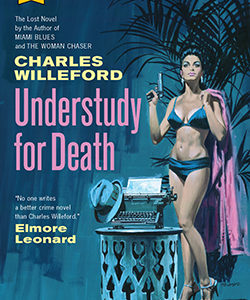A decade ago, when I sat down to write what would become my first published novel, I didn’t think about genre. I didn’t consider placement on the bookstore shelves or how a marketing department might position my work. I didn’t consider the elements of crime fiction or southern gothic either, though I had read plenty of both. Instead, as I struggled through that first novel, I considered one of the best pieces of advice I received when trying to find my way as a writer…write the book you want to read.
At that time, as is still the case, I turned again and again as a reader to books solidly classified as southern gothic, such as those written by Flannery O’Connor, Zora Neale Hurston, Carson McCullers and Toni Morrison. But I was also eager to spend time with the works of crime fiction, be it suspense, procedural or thrillers. It is at the intersection of these two genres where I would place Harper Lee’s To Kill a Mockingbird. So as I set out to write the book I wanted to read, I leaned on Lee’s work as my guide, and as such, I found a sweet spot between southern gothic and crime that I wanted to settle into.
Below, I’ve highlighted eight novels that straddle these two genres. They illuminate the beauty of the South and challenge the racism, violence and oppression of its past and present while simultaneously delivering a plot driven by the plot points, inciting incidents and third act twists of a great crime novel.
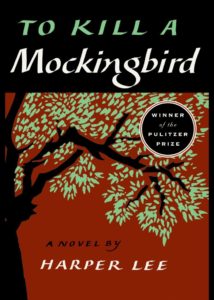
Harper Lee, To Kill a Mockingbird
Given that most readers will be familiar with this novel, I’ll dispense with a summary of its plot. While certainly more optimistic than much southern gothic, To Kill a Mockingbird is still a great example, and to me personally one of the best examples, of the poignant intersection where southern gothic meets crime. Told through the objectivity and clarity of a child, Lee’s novel makes use of many elements regularly found in southern gothic. She gives us an eerie setting with the Radley house, introduces us to a ghost-like figure in Boo Radley, and draws monstrous characters such as Bob Ewell. All of these elements butt up against the seemingly quaint and quiet Maycomb, Alabama, and the juxtaposition of these two amplifies Lee’s pitting of good against evil throughout the novel. However, Lee doesn’t stop there. Not only does she command these elements of southern gothic, she takes us on a quest to solve a crime and clear an innocent man, thereby using the more traditional elements and structure of crime fiction to motor her plot forward and compel us to keep turning those pages.
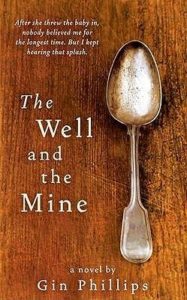
Gin Phillips, The Well and the Mine
Gin Phillip’s The Well and the Mine, her debut, is set in a 1930’s small coal-mining town in Alabama. The depression and the failing mining industry are crippling the town, but the Moore family is in the unique position of owning their land and thus having a way to provide for themselves. Unlike in much southern gothic, this is a relatively functional and loving family. The novel opens when a shadowy, almost ghost-like woman drops a baby down a well on Moore property. The youngest in the Moore family is the only witness and her claims are initially dismissed. The mystery of who abandoned the baby and why propels the story that is told through various points-of-view. Using a quiet and eloquent voice, Phillips gives life to this small town debilitated by extreme poverty and divided by issues of race. I first read this novel nine years ago, remember it well all these years later and chose to include it because I believe it lives in that same sweet spot.

Emily Carpenter, The Weight of Lies
In The Weight of Lies, Megan Ashley— desperate to escape her toxic mother—sets out to investigate a forty-year-old murder that was the inspiration for her mother’s best-selling novel. Driven by memories of a lonely childhood and a need to break free, Megan persists even as her pursuit of the truth leads to discoveries that put her life in jeopardy. Set on the remote Bonny Island off the Georgia coast and structured as a novel within a novel, this atmospheric story pits the past against the present, examines dysfunctional relationships and introduces us to the damaged, misfit characters we so often see in gothic literature. Told through multiple points of view, the story of Megan Ashley is powered by her relentless search for the truth of what happened in a decades-old murder.
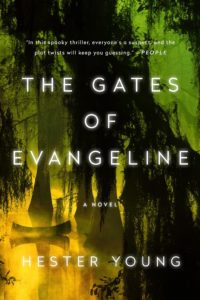
Hester Young, The Gates of Evangeline
In the Gates of Evangeline, we are introduced to Charlie Cates. In the wake of losing her four-year-old son to an unexpected death, Charlie leaves her job as a journalist and accepts an assignment from a true-crime publisher to investigate and write about a toddler who disappeared thirty years ago. Against the backdrop of Louisiana swamps and an expansive estate called Evangeline, Charlie struggles with dreams of children in distress, something that has plagued her since losing her son. Initially, she assumes the dreams are in response to her own loss, but then comes to believe they are cries for help from children in need. Tackling privilege, class, loss and a bit of the paranormal, the novel delivers twists and turns right up until its surprising conclusion.
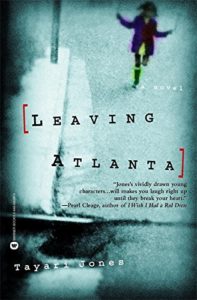
Tayari Jones, Leaving Atlanta
I struggled a bit with whether or not this novel could be placed at the intersection of southern gothic and crime fiction. However I’ve decided to include it because of the eloquence of the language and the innocence of the narrators, both of which are in stark contrast to horrific crimes. In Jones’s debut, which is based on true events, she takes us to 1979 Atlanta. It’s the end of the summer and black children are being murdered. We experience the terror of that time through the point-of-view of three fifth grade children. While it’s not a story about the solving of these crimes, it is a story about the cost of them.
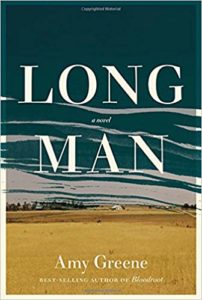
Amy Greene, Long Man
In the summer of 1936, the small Appalachian town of Yuneetah, Tennessee, already struggling under the weight of the depression, is bracing for the government’s decision to damn the Long Man River in order to deliver electricity to the region. Once complete, the project, which is based on an historical event, will flood the small town. Annie Dodson and her three-year-old daughter, Gracie, are the last ones in town still standing in the way of progress. Driven by strong ties to ancestors who have lived for generations on her farm and a desire to pass her land onto her daughter, Annie refuses to give up her property. Days before the river is scheduled to flood the town, young Gracie disappears. Amid torrential rains and rising flood waters, the search for Gracie drives this story, as well as the question…did she wander off or was she taken? A beautifully drawn, haunting images such as coffins floating away with the flood and skulls bobbing along with the rising waters add to its southern gothic tone.

Donna Tartt, The Little Friend
Following her 1991 best-seller, The Secret History, Donna Tartt introduces us to the Dufresnes family in The Little Friend. Set in Mississippi, the novel opens with a tragedy when nine-year-old Robin Cleve Dufresnes is found hanged in his family’s garden. Twelve years later, Robin’s sister, an infant when he died, sets out to take revenge on the man she believes killed her brother but remains at large. While the novel opens with a murder, the resolution of who killed Robin becomes of lesser concern, albeit still a driving force, than Tartt’s exploration of racism, conflicts between the classes and the past’s hold on this family.

Attica Locke, The Cutting Season
While Locke’s other three novels take us to Texas, which I consider more part of the Midwest than the South, The Cutting Season is set squarely in Louisiana. On Belle Vie, an antebellum plantation now run as a tourist attraction, a female migrant worker’s body is discovered. Concerned that law enforcement is pursuing the wrong leads, the plantation’s manager, Caren Gray, at great danger to herself, works to uncover secrets that link the missing woman to the disappearance of a former slave many years ago. Using poetic language and the discipline to deliver a fast moving plot, Locke examines the violent and racist past of the South as well as ongoing oppression in the region.
















